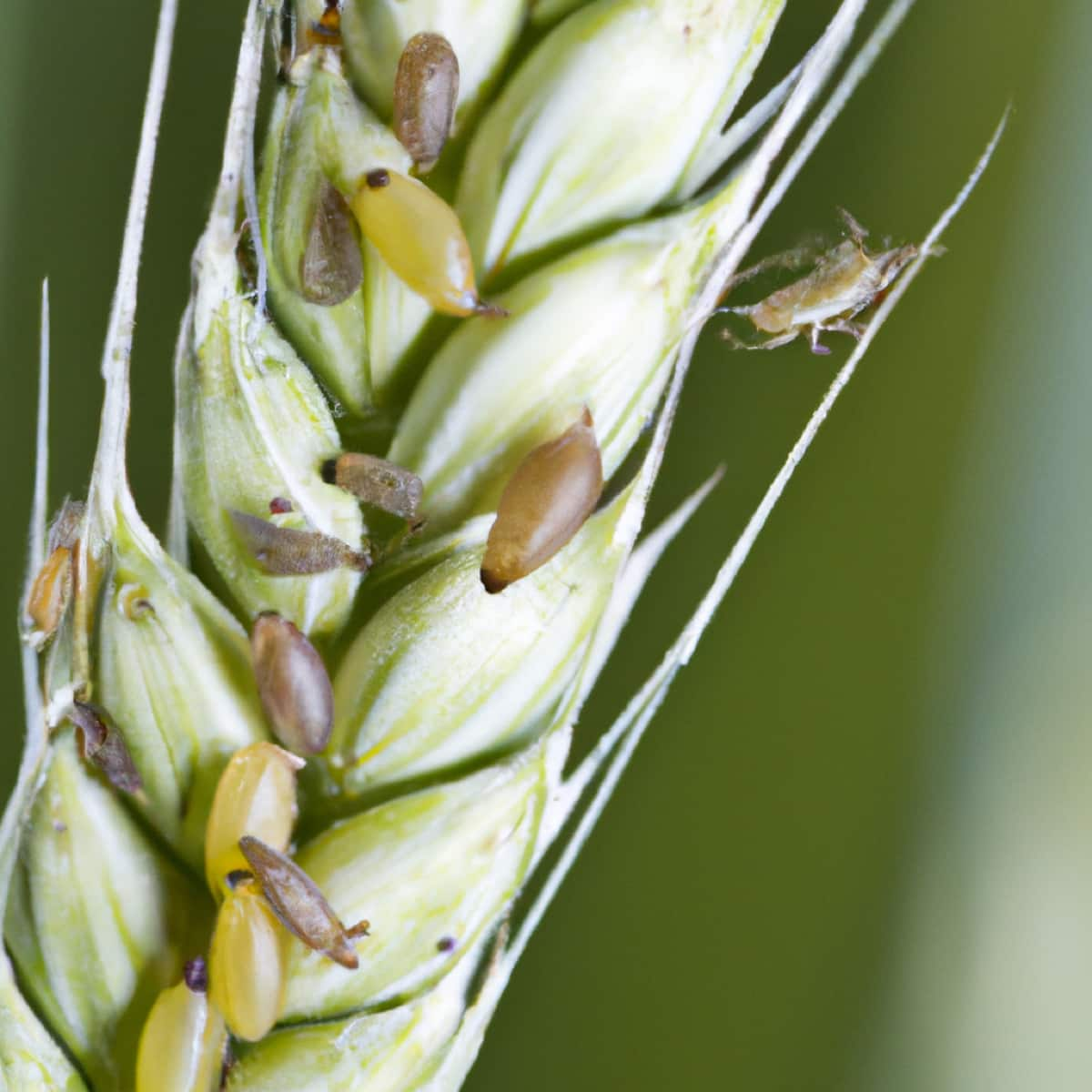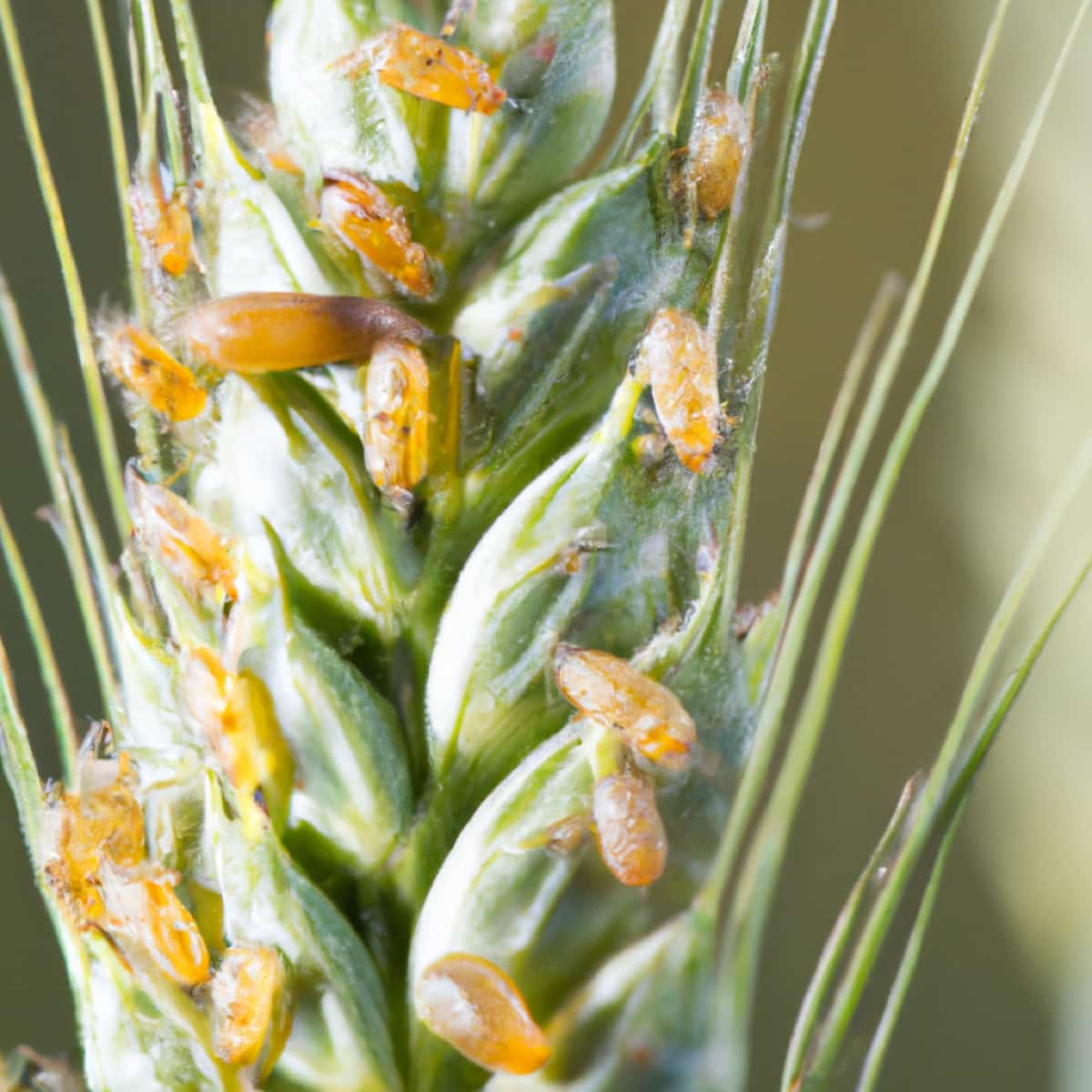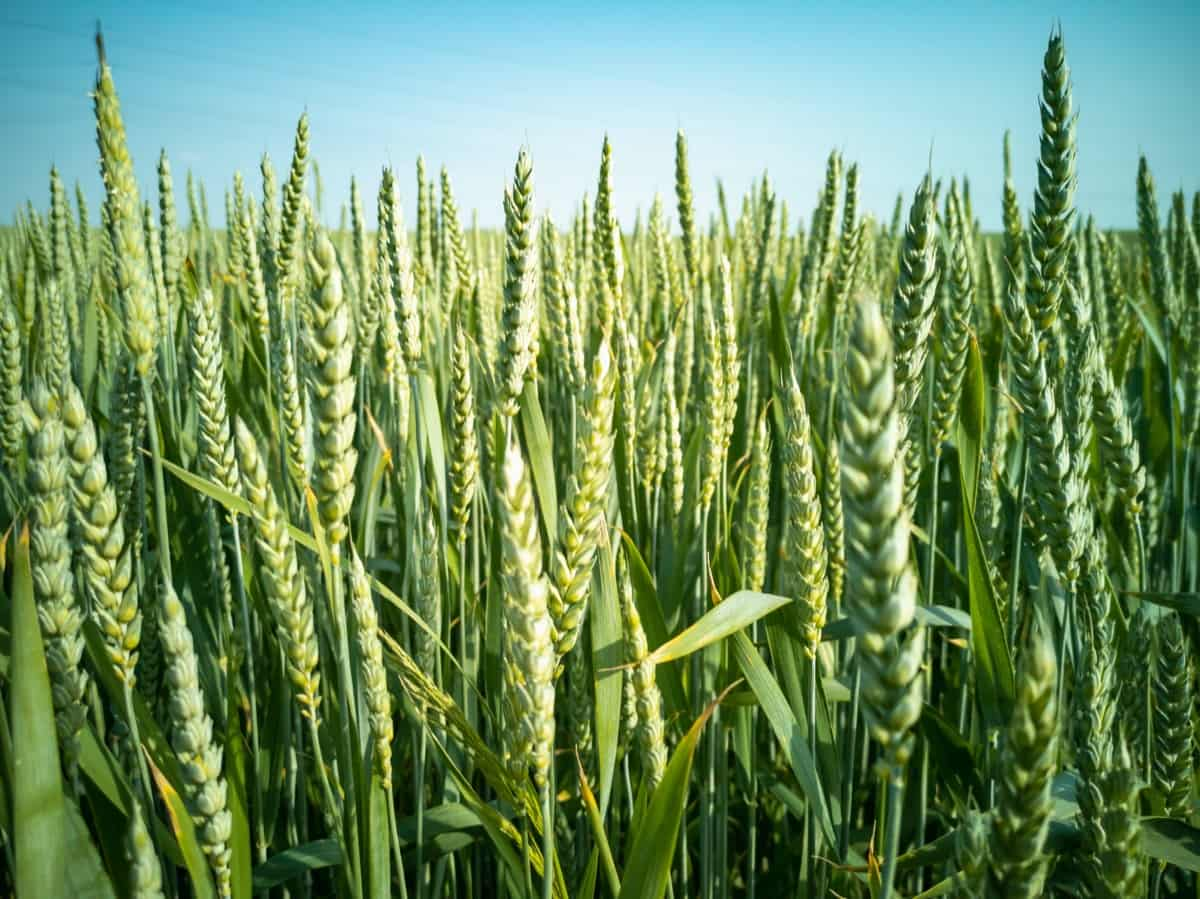The wheat aphid, Macrosiphum miscanthi, is a small, sap-sucking insect belonging to the Family Aphididae of the Order Hemiptera. Aphids come in many different species but have the same basic feeding behavior. They suck the juices from wheat plants’ stems, leaves, and flowers, reducing their growth and causing yellowing and wilting of the foliage.

They can reproduce quickly and often in high numbers, leading to large populations that can cause significant damage to wheat crops. In addition, aphids can act as vectors for plant diseases, transmitting them to other plants. To effectively manage this pest, it is important to understand its life cycle, its preferred habitats, and the best methods for controlling it. This article will provide an overview of aphids in wheat crops, including their symptoms, identification techniques, and control.
Wheat Aphids Management in Wheat
Life Cycle of Aphids in Wheat Crop
Generally, the life cycle of aphids in wheat crops is complex. They lay eggs in the spring, which hatch into nymphs. The nymphs molt several times before becoming adults. The adults reproduce in the summer. In the fall, the nymphs enter a dormant state and overwinter. The adults migrate to other wheat fields in the spring, potentially spreading the pest.
- Egg stage – The female aphid lays eggs in the spring, usually within the developing wheat crop. The eggs are typically laid in the crevices of the wheat leaves, the stem, or the seed heads.
- Nymph stage – After a few days, the eggs hatch into nymphs, and the nymphal phase ranges between 6-8 days with four instars. They feed on the sap of the wheat plants, causing damage to the crop. They molt several times before becoming adults.
- Adult stage – They feed on the sap of the wheat plant, which causes stunted growth and yellowing of the leaves. Adult aphids also reproduce, producing live young without mating.
- Reproductive stage – In the summer, the aphids can reproduce. The males and females mate, and the females lay eggs, which will hatch into nymphs in the fall.
- Overwintering stage – In the fall, the nymphs enter a dormant state, called diapause, and overwinter until the spring.
- Migration stage – In the spring, the adult aphids will migrate to other wheat fields for food. This can spread the pest quickly, leading to an infestation.
Occurrence of Aphids in Wheat Field
- Location of Wheat Aphid: Wheat aphid pest has been reported in wheat crops in many countries, including the USA, Canada, Australia, New Zealand, India, Pakistan, Russia, Turkey, South Africa, China, and the European Union.
- Host range: The pest can cause an infestation in wheat, barley, oats, and Cynodon dactylon (Doob grass).
Factors Favoring Population Increase of Aphids in Wheat Fields
- Temperature – Temperature ranges of 25-35°C allow for the rapid growth of aphids, resulting in more generations in a season. In addition, their bodies are more efficient at taking in nutrients in warmer temperatures, which can lead to larger populations.
- Food availability – Wheat plants provide ample food for the aphids, including sap and other plant matter. As the wheat plants grow, aphids can feed on the sap of the plant and reproduce quickly.
- Natural enemies – The presence of insects, such as ladybugs and predatory wasps, can influence the population of aphids.
- High reproductive rate – Aphids can reproduce quickly through parthenogenesis, by which female aphids produce offspring without fertilization. This can increase the aphids’ population in a very short amount of time.
- Overuse of pesticides – If they are overused, they can kill off the aphids’ natural predators, increasing the population.
In case you missed it: Wheat Ghujhia Weevil Management in Wheat: Symptoms, Treatment, Chemical, Biological, Natural, and Organic Control

Identification of Aphids in Wheat Fields
- Egg: The eggs are small and oval-shaped and vary in color depending on the species. They are laid along the leaf veins of the plants.
- Nymph: The nymphs look like small versions of the adult aphids but are apterous (wingless).
- Adult: The adults are typically grey or black and have pear-shaped bodies. They can fly and will lay eggs on the wheat plants. They have two wax-secreting tubes known as cornicles that protrude from the abdominal segments 5 & 6.
Damage Symptoms of Aphids in Wheat Fields
- In the nymphal and adult phases of the pest, they will suck the phloem sap of the wheat plant from the ears causing stunted growth and yellowing of the leaves.
- The premature dropping of flowers from the plant. They also cause mottling of leaves, which is a discoloration pattern caused due to lack of chlorophyll.
- The pest’s severe damage is found in huge counts during cold and cloudy weather on the ears and young leaves of the plants.
- A well-manured, nicely irrigated, and succulent crop will nurture the pests for a long time and experience heavy damage in yield.
- Aphids can spread viruses from one plant to another, which can cause the plants to become weakened and more susceptible to disease.
Percentage of Yield Lose in Wheat due to Aphids
Generally, losses due to this pest are reported between 35-40% in India. The losses are greater during February and March as the pest population peaks during these months, when the ears are about to ripe. And the ETL is 5 aphids per earhead.
Cultural Control of Aphids in Wheat Fields
- Resistant Varieties – Different wheat varieties produce different amounts of sugar and amino acids attractive to aphids. So, planting varieties that produce less sugar and fewer amino acids can reduce aphid populations.
- Crop Rotation – Planting crops other than wheat in between crop cycles helps break the pest’s life cycle and reduce its population.
- Avoid Over-Fertilization – Excess nitrogen fertilizer can stimulate the growth of plants which produce more sugar and amino acids, making them more attractive to aphids.
- Other Cultural Practices – Plowing and hoeing the soil to disrupt aphid life cycles, reducing the number of weeds and other hosts for aphids, and planting trap crops that are more attractive to aphids than wheat.
Biological Control of Aphids in Wheat Fields
- Parasitoids – Aphidius spp., a female wasp, feeds within an aphid’s body in its larval phase. And, Aphelinus spp., a tiny wasp, will feed on the younger aphid instars.
- Predators – Syrphid fly, pirate bug, damsel bug, hoverflies, ladybird beetle, praying mantis, predatory thrips, rove beetle, ladybugs, lacewings, and parasitic wasps feed on aphids and reduce their populations.
Chemical Control of Aphids in Wheat Fields
- Based on the type of insecticide used, the rate and timing of application may vary.
- For example, pyrethroids are best applied early in the season when aphid populations are low, while neonicotinoids are best applied when aphids are actively feeding.
- Mix Oxydementon methyl 25 EC or Dimethoate 30 EC or Monocrotophos 36 SL @ 0.375 L in 500 L of water per hectare and apply by sprayer.
Preventive Measures for Control of Aphids in Wheat Fields
- A natural and organic insecticide that can control aphids in wheat fields is Neem oil. It is made from the neem tree and is toxic to aphids and other soft-bodied insects. Mixing the neem oil with water and spraying it onto the wheat plants will eliminate the aphids.
- Insecticidal soaps can be used to control aphids in wheat fields. These soaps are made from naturally occurring fatty acids and are toxic to aphids. They are best used when the infestation is small.
- Pruning is the removal of infected plants and branches to reduce the number of aphids in the field. Pruning also increases air circulation in the crop, which helps to reduce the humidity and prevent the spread of the aphids.
In case you missed it: Loose Smut Disease Management in Wheat: Symptoms, Treatment, Chemical, Biological, Natural, and Organic Control

Conclusion
The conclusion of the study on the impact of aphids on wheat fields is that using integrated pest management practices, including natural and chemical control measures, can help reduce the damage caused by aphids. These practices include monitoring for signs of infestation, controlling weeds, crop rotation, and applying insecticides when needed.
In addition, cultural practices such as proper nutrient management and irrigation can help reduce aphid populations. Finally, farmers should be aware of the potential damage aphids can cause to their wheat crops and take necessary precautions to prevent infestations.
- Beneficial Insects in Pest Management
- Natural Solutions for Pest Control in Flower Gardens
- Types of Fungicides Used in Agriculture
- Common Issues in the Fruit Development Stage of Pomegranate Farming
- Fruit Development Issues in Papaya: Easy Solutions and Treatment
- Soil-Borne Diseases and How to Protect Your Plants
- Practices to Prevent Disease Spread in the Garden
- From Wilted to Thriving: How to Treat Root Rot Naturally in Houseplants
- Natural Remedies to Cure Brown Spots on Fig Tree Leaves